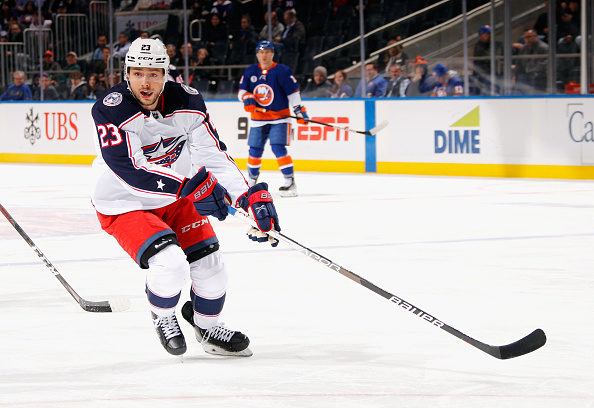NHL player development seems to always result in more questions than answers. How likely is it for a top pick to pan out? What makes a player a “steal”? Last Word On Hockey will be starting a new series on how to properly develop prospects from all different spots throughout the draft. This week’s piece involves draft picks in the back half of the first round and how they were used early in their careers.
NHL Player Development Of First-Round Picks
In the span of 2005 through 2015, there were 84 total selections made between 16th overall and 30th overall on forwards playing in North America. Looking at all 84 forwards, they were split into different categories. Those categories were “Forwards Deemed NHL-Ready and Brought In Immediately When Ready,” “Forwards Near NHL-Ready and Brought In Immediately When Near-Ready,” “Forwards Rushed Slightly,” “Forwards Rushed,” “Forwards Forced,” “A Little Patience,” “Patience,” and “Too Much Patience.”
There were 12 forwards who fell into the fourth category, “rushed,” on the list. Of those 12 players, one made his NHL impact in his DY+4 season. That player is Brendan Gaunce.
In this piece, we will be using stats from eliteprospects (raw stats) and hockey-reference (ice time). Additionally, the analytics we are using are as follows: even-strength offence goals above replacement (EVO), even-strength defence goals above replacement (EVD), wins above replacement (WAR) and goals above replacement (GAR). Those analytics are from evolving-hockey (subscription required).
NHL Player Development Of Brendan Gaunce
Gaunce, drafted 26th overall in the 2012 NHL draft by the Vancouver Canucks, came out of the Belleville Bulls organization of the OHL. In his DY-1 season, Gaunce scored 11 goals and 25 assists for 36 points in 65 games, for 0.554 points per game. That ranked 59th out of the aforementioned 84 forwards in DY-1 production. He would follow that up with 28 goals and 40 assists for 68 points in 68 games the next season, for exactly one point per game. That ranked 59th again, this time among those same 84 forwards in DY production. After being drafted, Gaunce would spend two more seasons in the OHL before heading to the AHL for a season.
In his DY+1 season in the OHL, Gaunce scored 33 goals and 27 assists for 60 points in 60 games, for exactly one point per game yet again. That ranked 49th among the 82 forwards still outside the NHL in DY+1 production. The following year, he would be traded about halfway through the season to the Erie Otters. Overall, Gaunce scored 31 goals and 41 assists for 72 points in 65 games, for 1.108 points per game. That ranked 26th out of the 70 forwards still outside the NHL in DY+2 production.
The next season, he would join the Canucks AHL affiliates, the Utica Comets. There, he scored 11 goals and 18 assists for 29 points in 74 games, for 0.392 points per game. That ranked 34th out of the 46 forwards still outside of the NHL in DY+3 production. Finally, the next season, Gaunce would get a crack at the NHL.
How Was Gaunce Used
In his first chance at the NHL level, he would not get a full season. Instead, he would split between the NHL and AHL. At the AHL level, he played 46 games scoring 17 goals and 21 assists for 38 points. But when he did play in the NHL, he stuck for 20 games and averaged 12:46 time on ice per game. In that role, he scored a single goal. His analytics were awful, which is unsurprising given his raw stats. Gaunce had an EVO (-2.3) well below replacement level. His EVD (0.8) was above replacement level, but it was not good enough to bring up the rest of his analytics. His WAR (-0.3) and GAR (-1.6) were both also below replacement level.
In his second season, despite the pretty terrible rookie year, he would see a larger NHL role and smaller AHL role. At the AHL level, he played just four games, scoring three points. Meanwhile, at the NHL level, he would see 57 games. In those 57 games, he averaged just 9:29 per game, but it was still an important step in the right direction. Within that role, he only recorded five assists. His analytics were still just as bad as the year before. His EVO (-1.4) was better, but still bad, while his EVD (0.8) remained the same. Despite the somewhat improved even-strength metrics, his WAR (-0.3) and GAR (-1.6) remained exactly the same.
Year Three Injuries Hold Gaunce Back
Gaunce, in his third season, would miss the opening part of the year due to a shoulder injury. However, he once again would split the season with five games in the AHL and 37 in the NHL. With the Comets, Gaunce scored three points. When he played up in the NHL, albeit in a small sample, he averaged a new high of 13:19 per game. With that new and improved role, Gaunce would score a new career-high of six points. Analytically, it was Gaunce’s best year. He would record a score of zero, or exactly replacement-level, in all four analytics looked at. Safe to say, he never moved forward in his development.
Following that third season in 2017-18, Gaunce would play 34 more NHL games over the course of the next four seasons. Three of those four seasons were spent in North America, and he played with the Canucks, Boston Bruins (2019-20) and Columbus Blue Jackets (2021-22). Sprinkled in during that stretch of four seasons was one season in Sweden with the Vaxjo Lakers, scoring 12 points in 18 games. Also, he played 151 AHL games in that stretch, scoring 103 points. This upcoming season, he is slated to play for the Blue Jackets. He had seven points in 30 games with them last season.
Gaunce Was The Wrong Draft Choice
In hindsight, and hindsight is always 20/20, maybe Gaunce was not the right choice. While it is true that he was never given a true NHL shot in the form of a big role with the Canucks in his first three seasons, he never earned that role either. But NHL player development was not the main problem. Looking back, it’s clear he was not the right choice. There is one pick in particular who was taken a few picks after Gaunce in the 2012 draft. That pick is Tanner Pearson.
Pearson not only played in the same league as Gaunce, but he out-produced him in both his DY-1 and DY seasons. The difference between the two is Gaunce stayed in the OHL for two years after getting drafted. Meanwhile, Pearson went immediately to the AHL (and did well) and then made an NHL impact. That was in that same time period that Gaunce remained in the OHL. Simply put, the Canucks didn’t make the right choice. While the situation could have been different if not for the small and limited roles Gaunce was given. But, those are hypotheticals. The real deal is, Pearson was the better choice and, in the present day, remains the better player.
Junior league stats via Elite Prospects, NHL stats via Hockey Reference, NHL analytics via Evolving Hockey
Main Photo:
Embed from Getty Images






